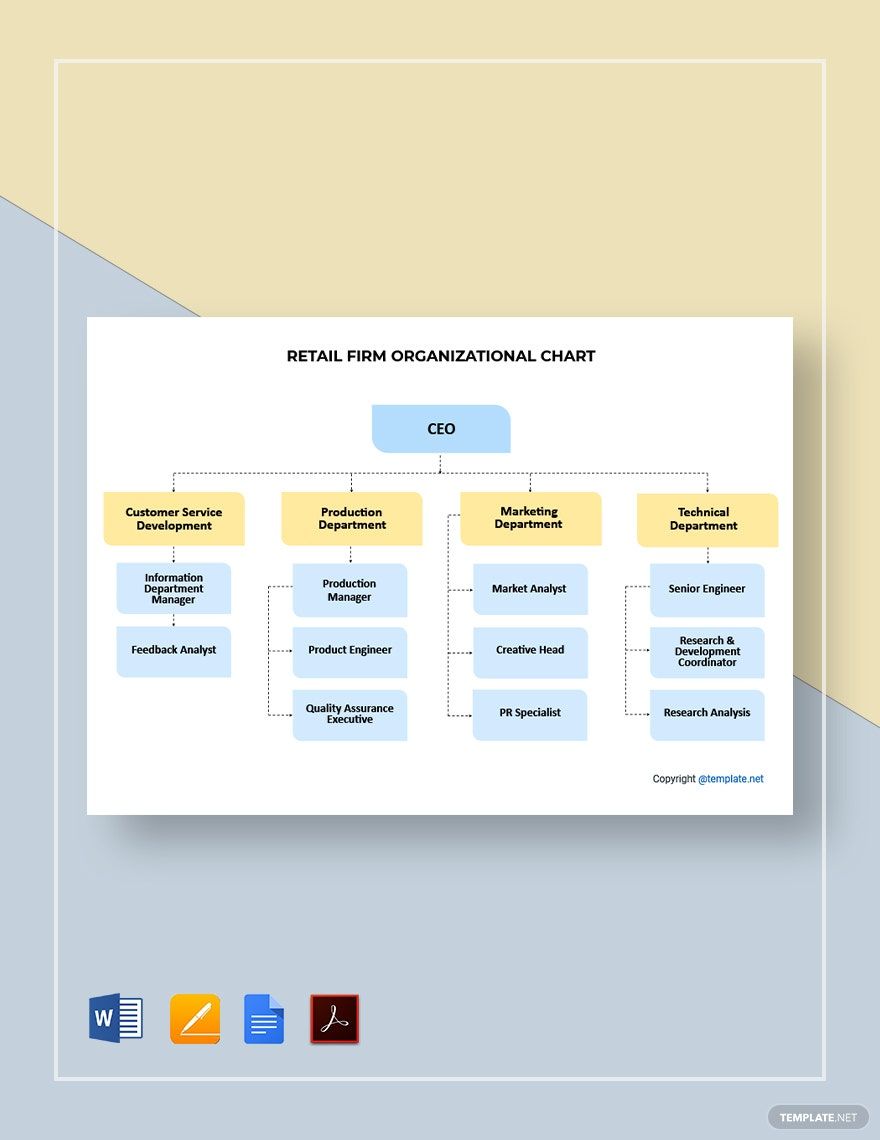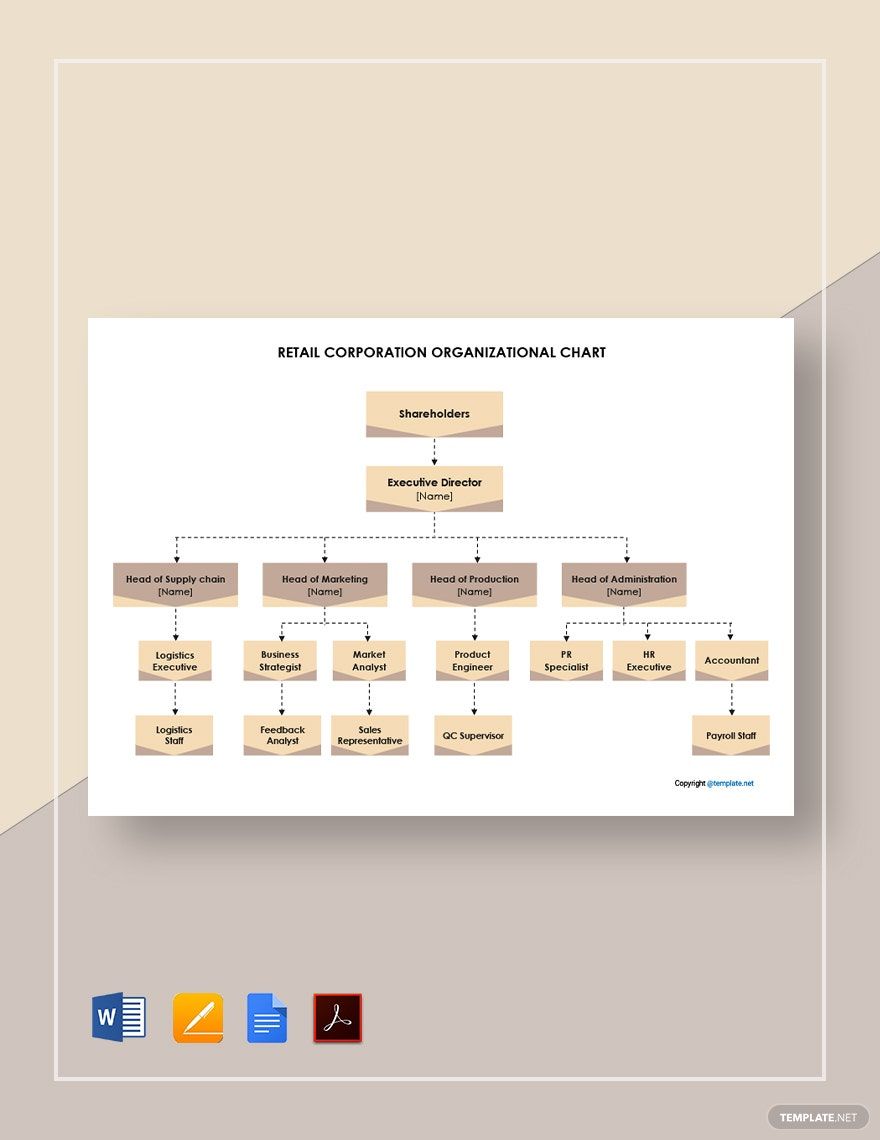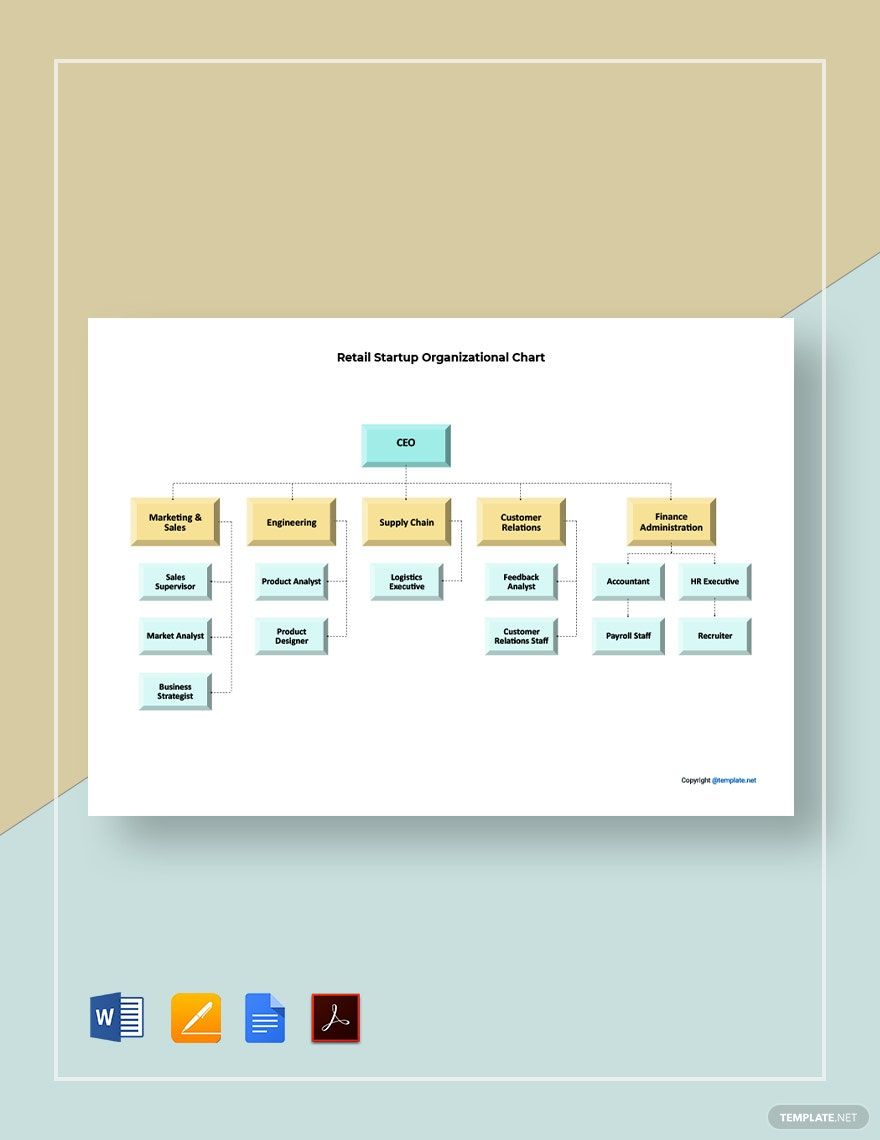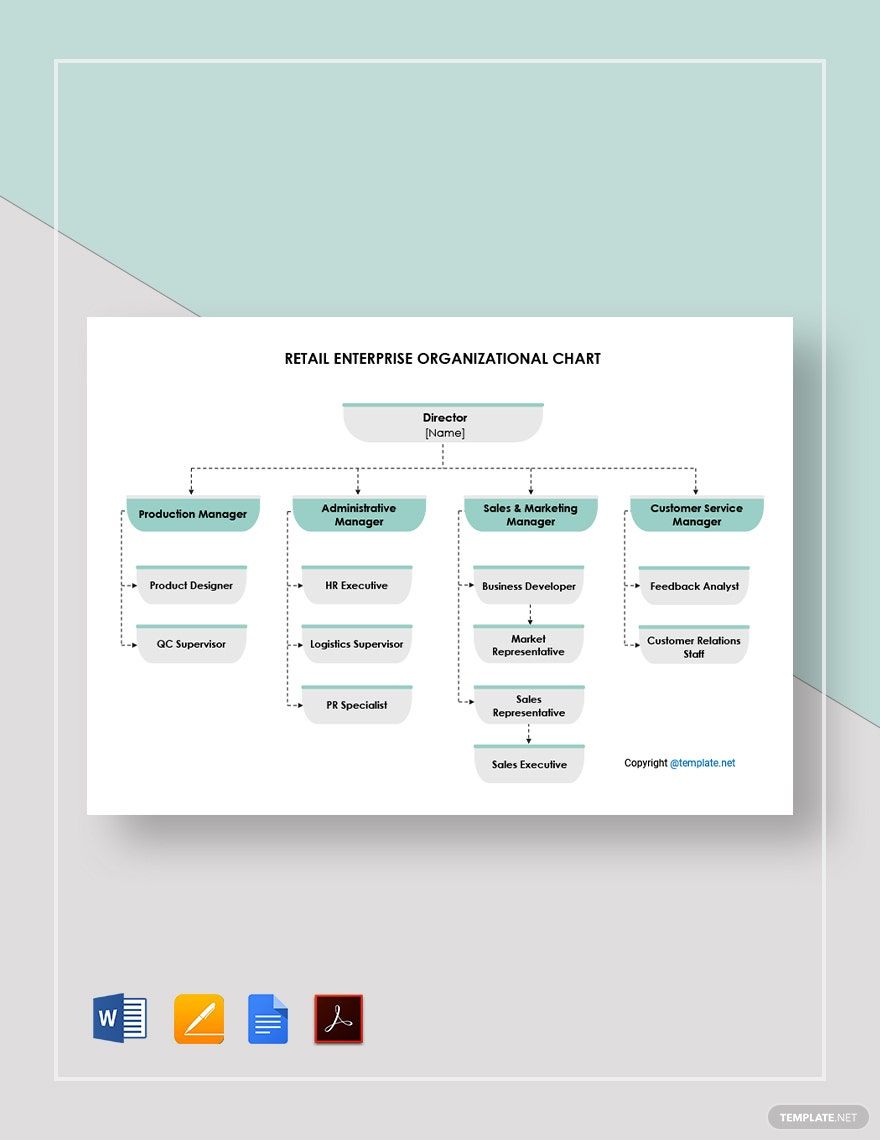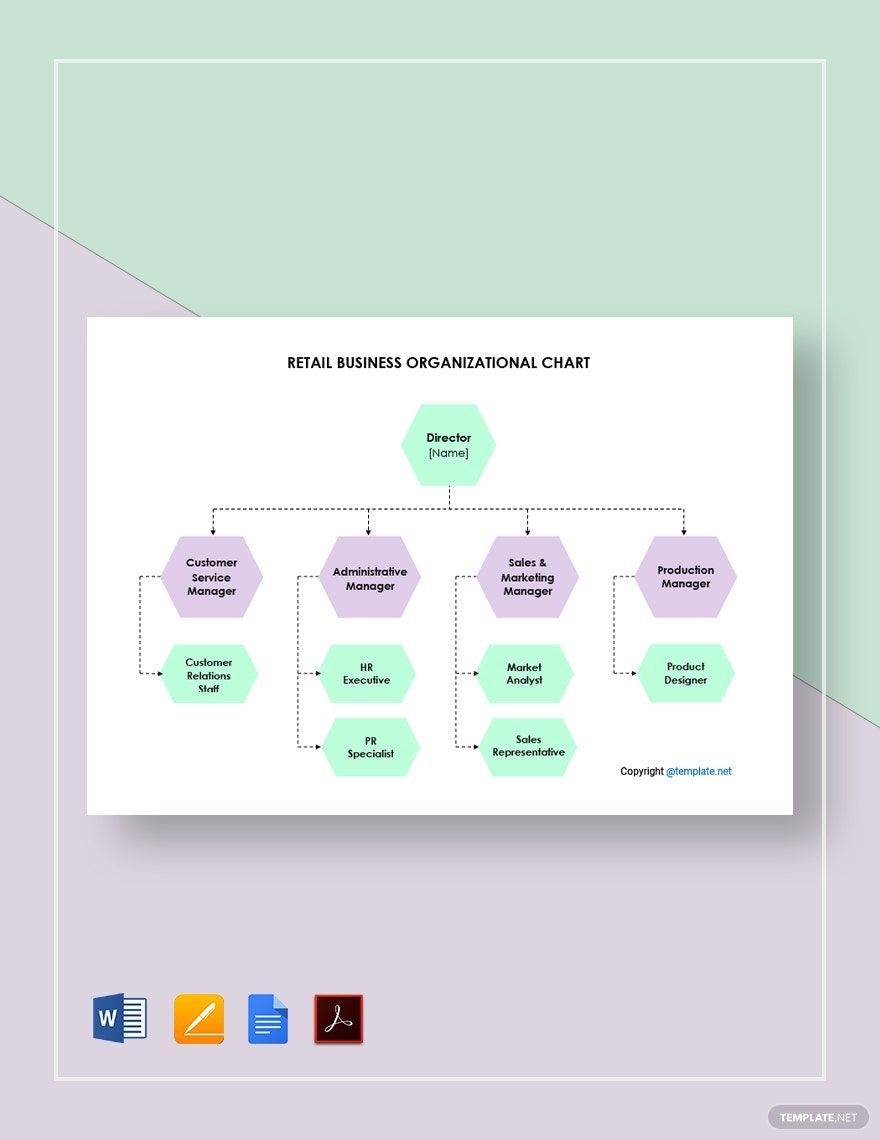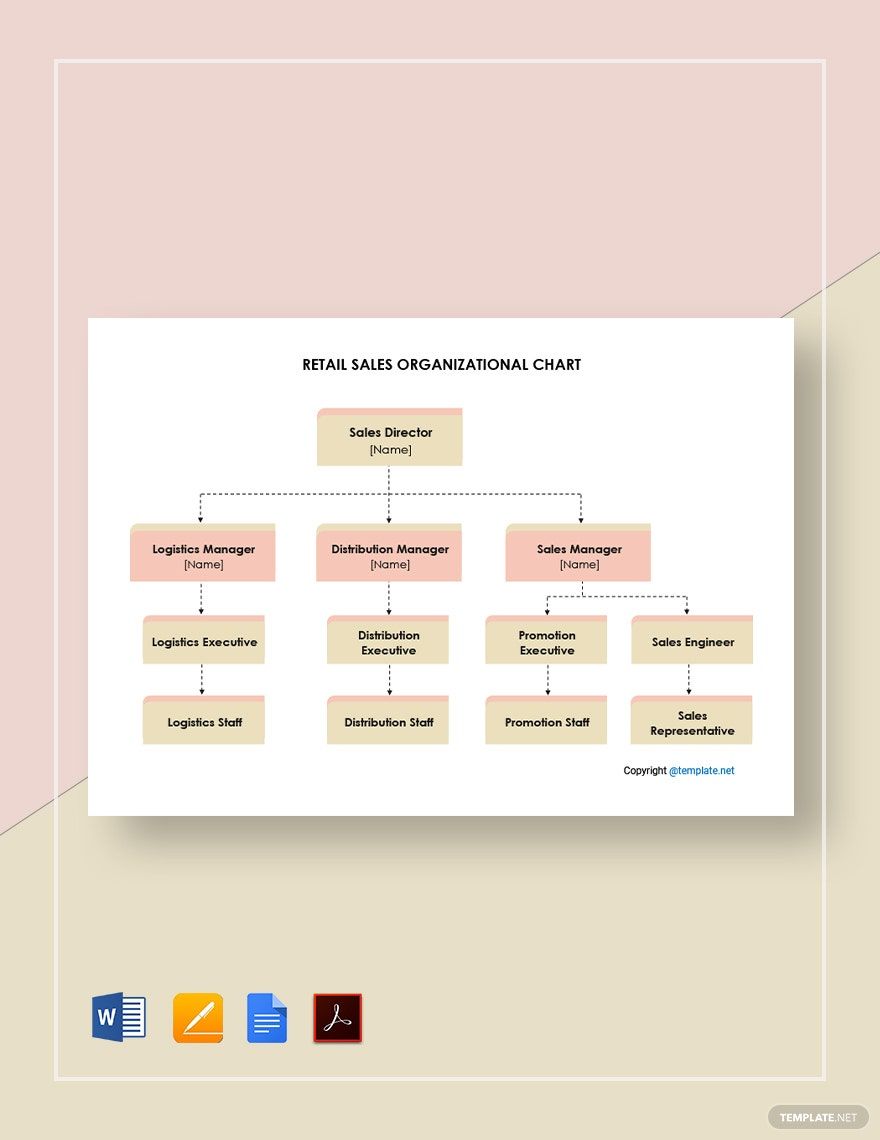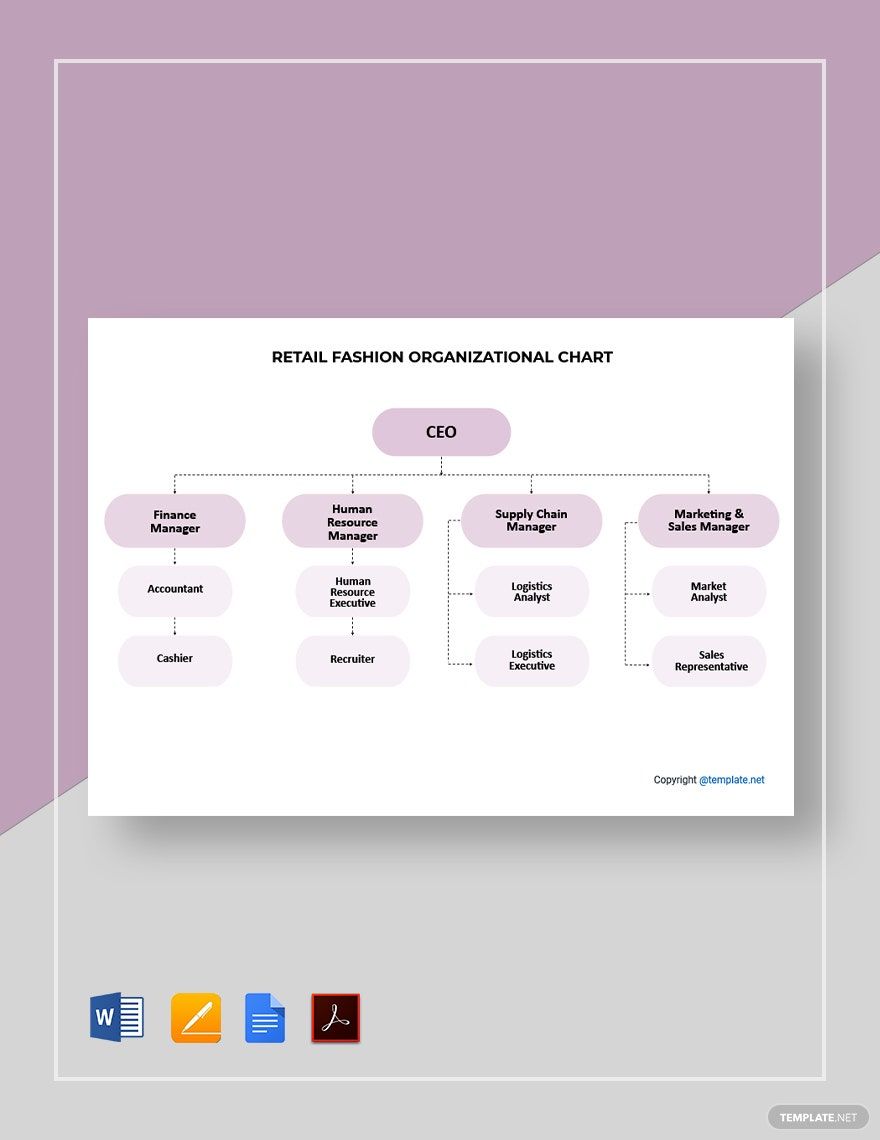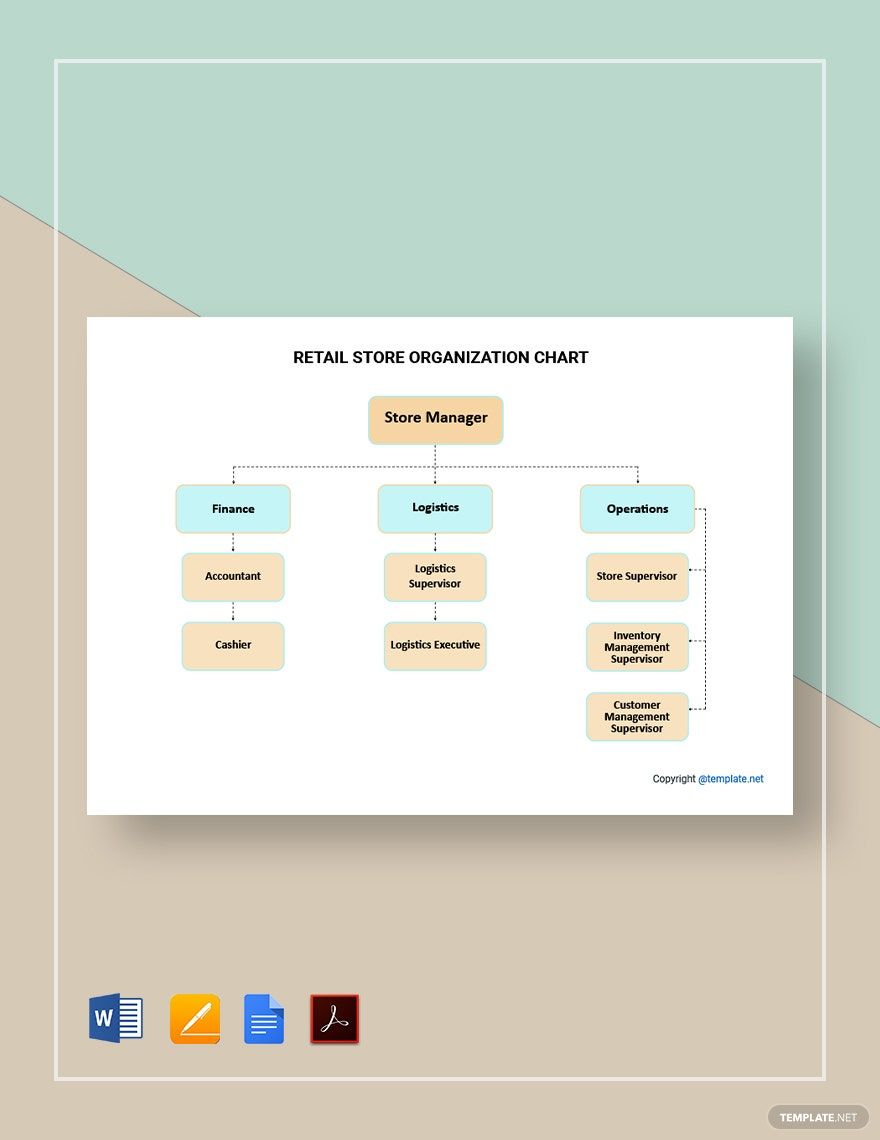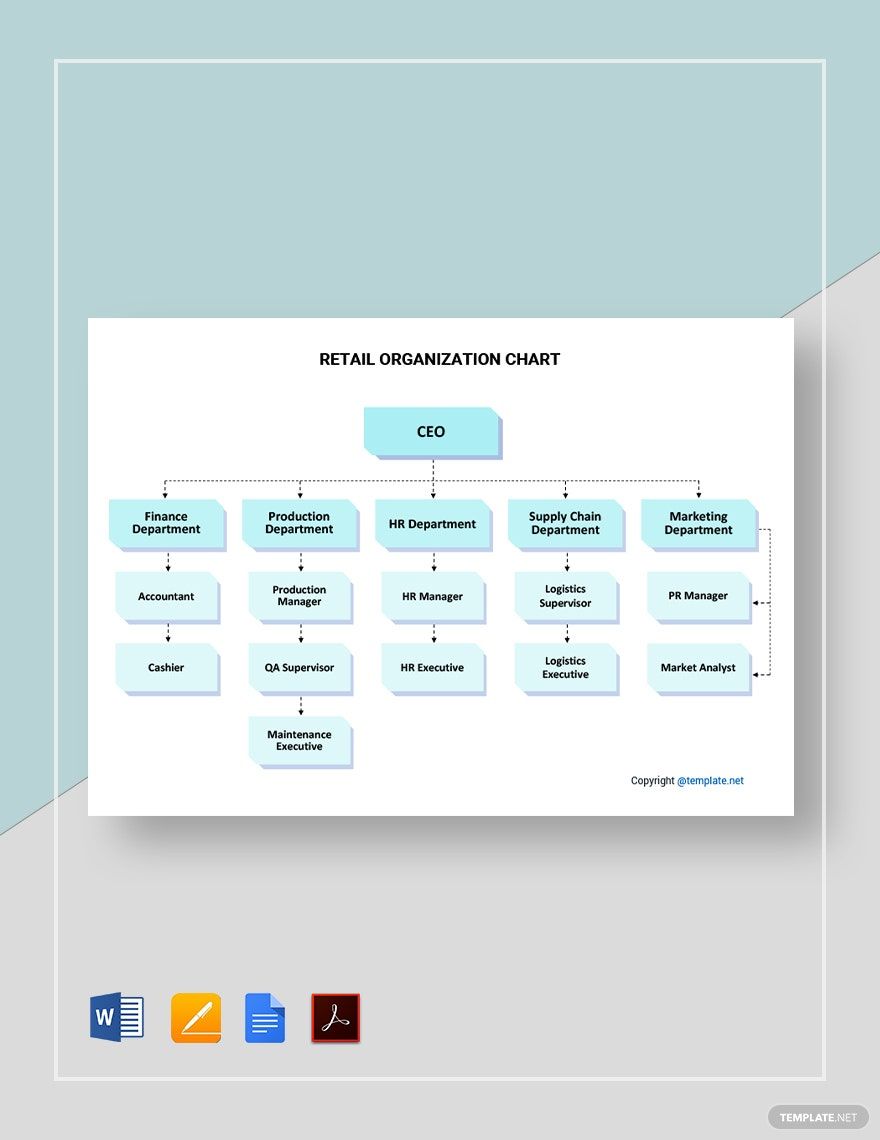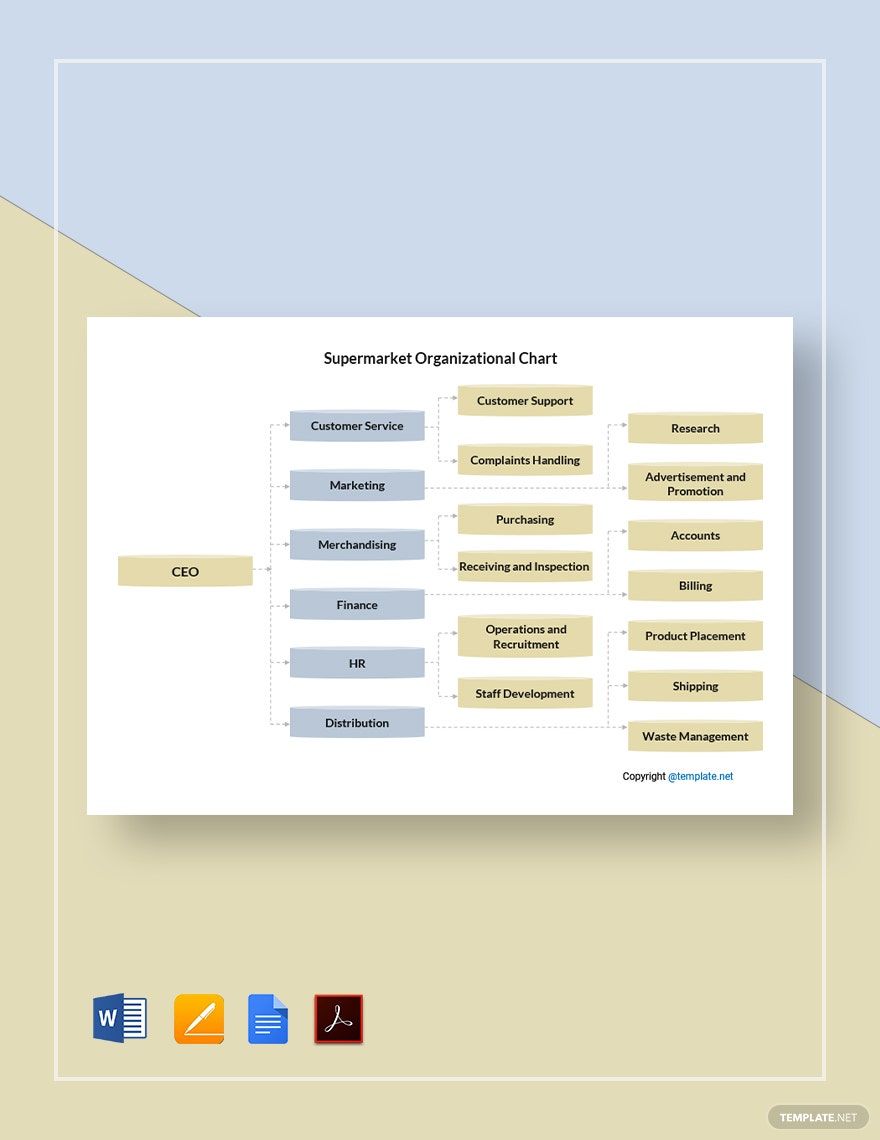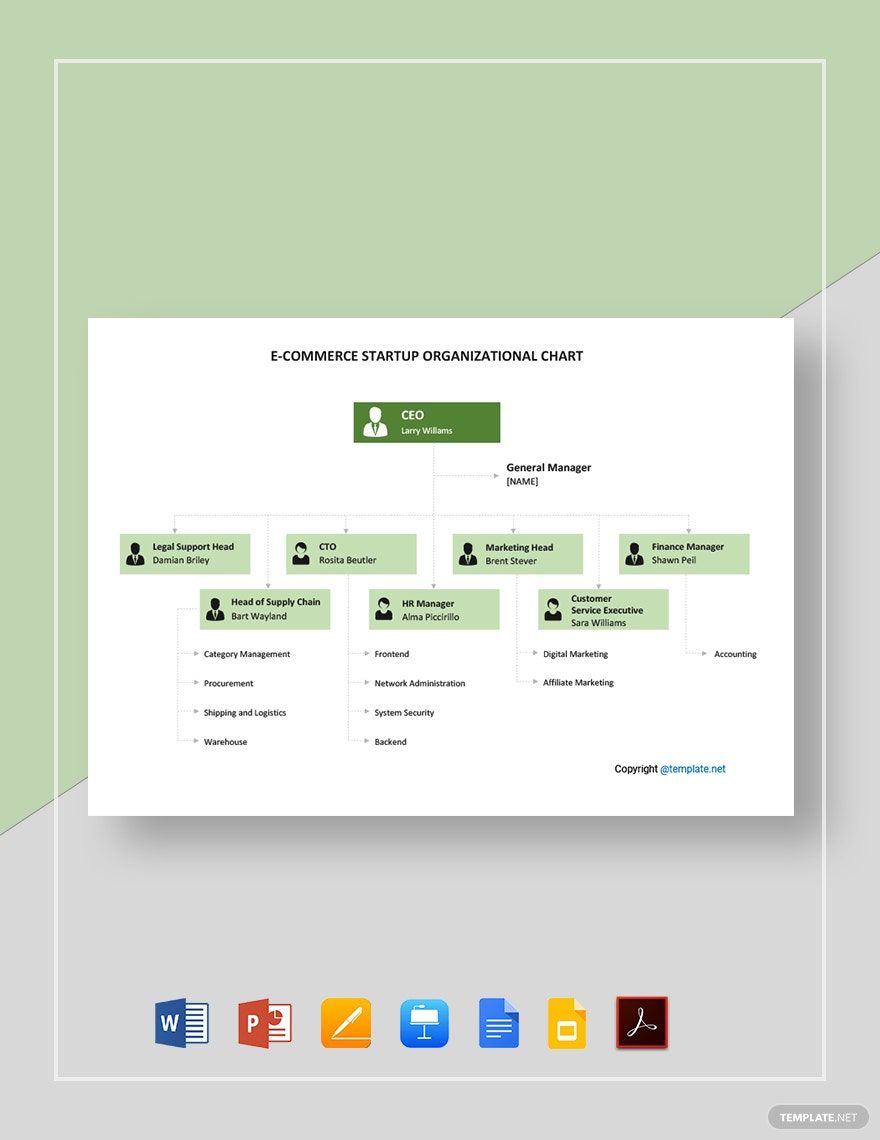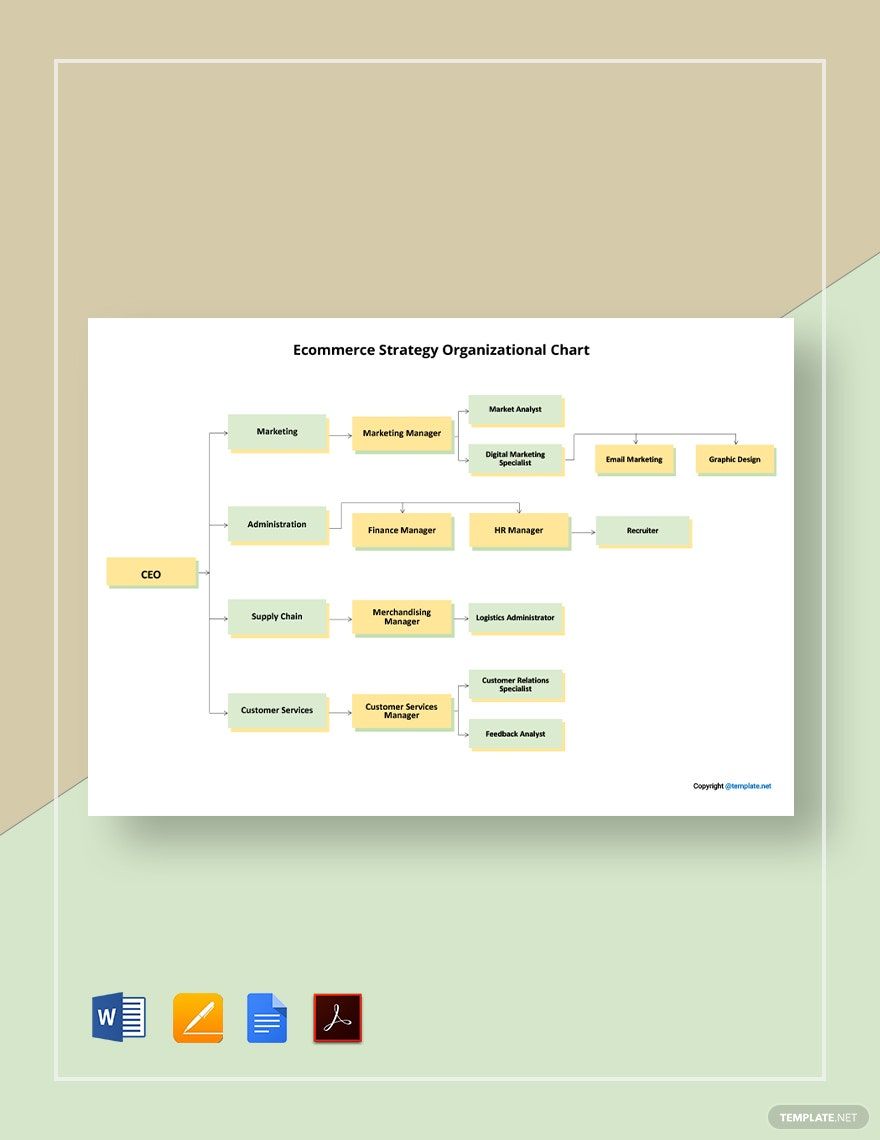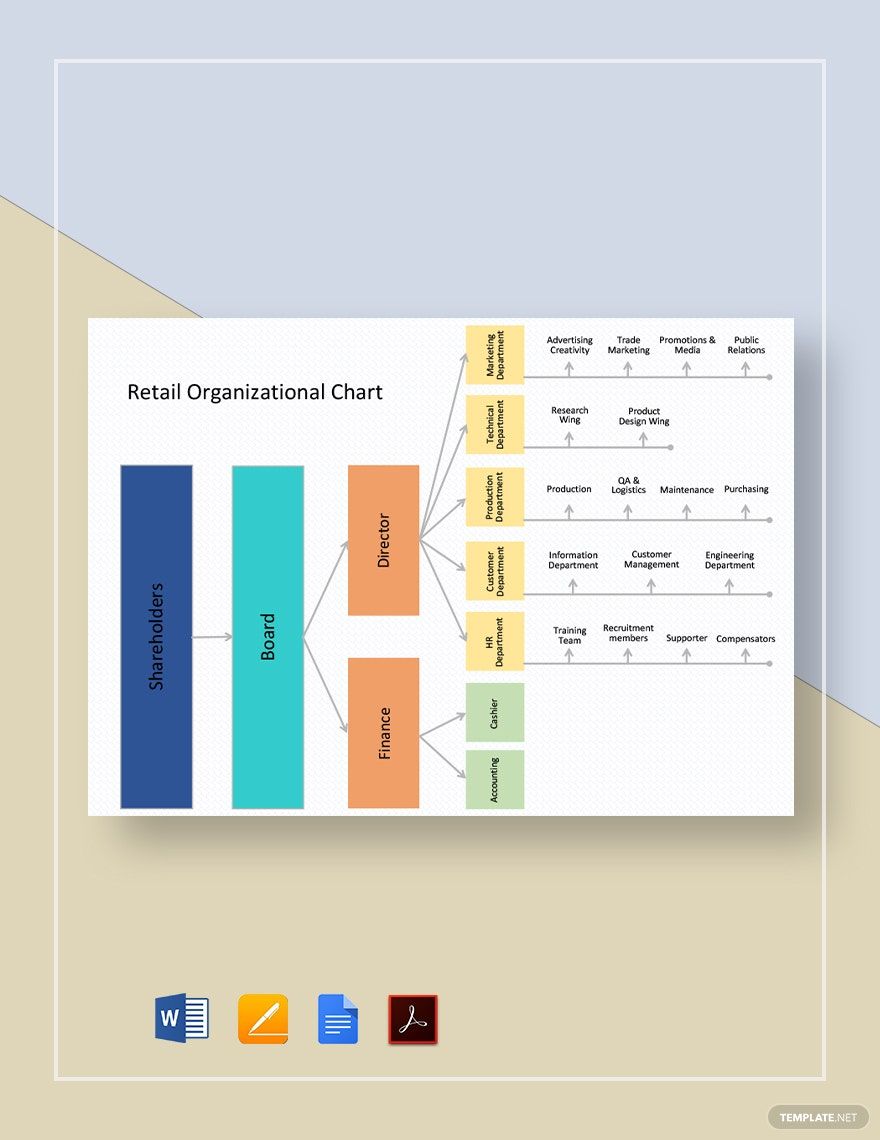Streamline Your Business Structure with Ready-to-Use Retail Organizational Chart Templates by Template.net
Experience the seamless transformation of your business workflow with these expertly crafted Retail Organizational Chart Templates in Google Docs by Template.net. These charts are perfect for business managers and HR professionals striving to create a clear, professional-grade representation of organizational hierarchies without the hassle of starting from scratch. Whether you need to streamline the workflow of a small retail shop or exhibit the management structure of a large department store, these charts provide the ideal solution. With pre-designed templates that are both free and easily downloadable, you can effortlessly create, customize, and print your charts in a matter of minutes. Enjoy the flexibility of visually appealing and classy designs—all without the need for design skills or prior experience. Customize the layouts not just for print, but also for social media or digital presentations.
Discover a vast collection of stunning pre-designed Retail Organizational Chart Templates available in Google Docs, offering creative and efficient solutions tailored to meet your retail enterprise needs. The library is regularly updated, ensuring you always have access to fresh and relevant designs to stay ahead in the industry. Choose from the free templates to get started instantly, or browse the premium collection to find that perfect match for more specific requirements. Once perfected, easily download or share your charts for widespread reach, whether through emailing, printing, or digital exporting. For the best of both worlds, combine free and premium templates to add versatility and enhance your business presentations.

